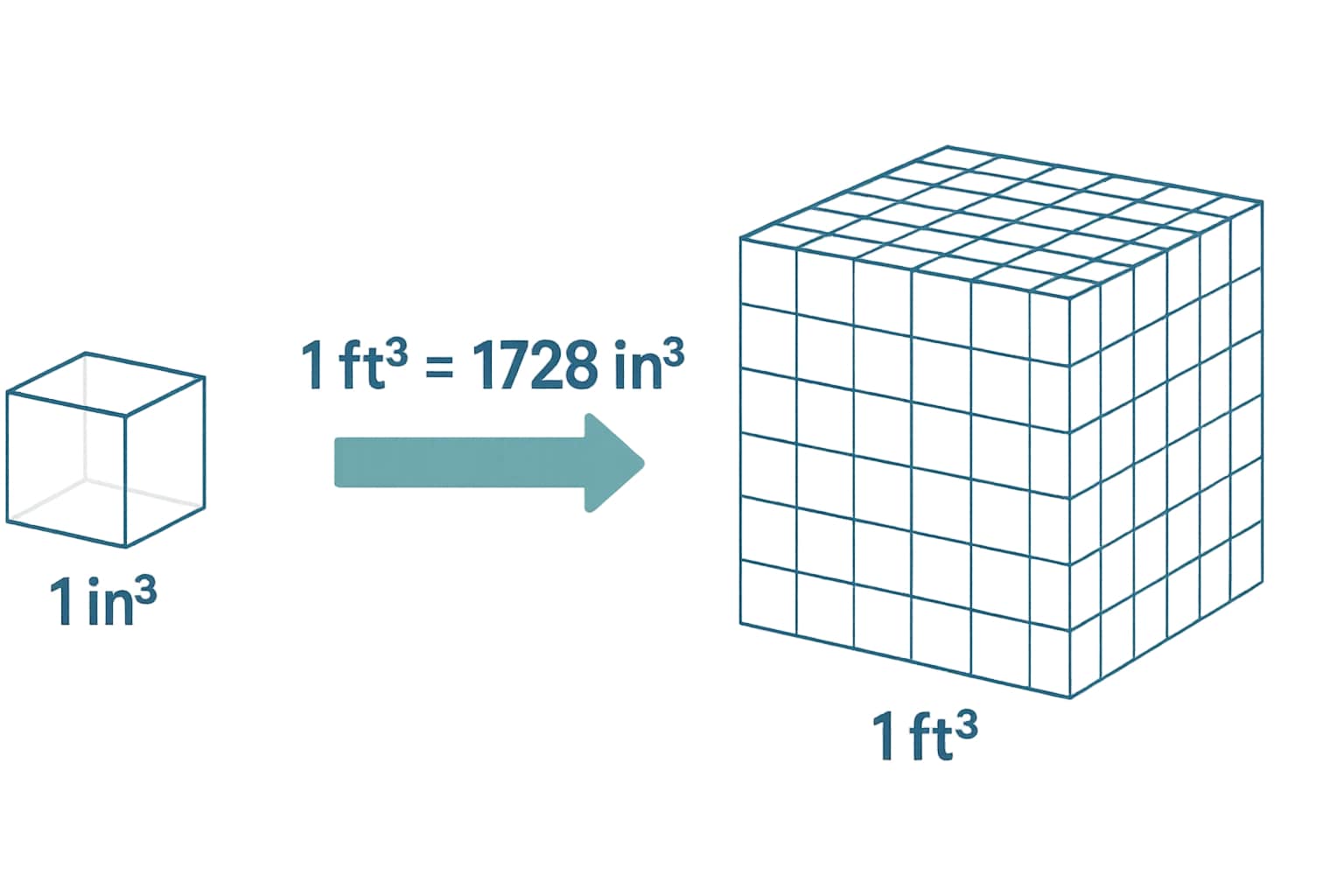cubic inch to cubic foot – How to convert in³ to ft³
The conversion between cubic inches and cubic feet helps scale measurements from very small to much larger volumes. Cubic inches are useful for precision in product design or automotive parts, while cubic feet describe room sizes, storage, and shipping. Knowing how to move between them ensures smooth calculations across industries.
What is a cubic inch (in³)?
A cubic inch is the volume of a cube with sides of 1 inch. It equals about 16.387 cm³. This unit is still widely used in engineering, automotive engines, and product specifications.
What is a cubic foot (ft³)?
A cubic foot is the volume of a cube with sides of 1 foot. It equals 1728 in³. The cubic foot is common in the United States for household appliances, shipping containers, and construction projects.
Conversion formula – cubic inch to cubic foot
Because 1 foot equals 12 inches, the relationship between in³ and ft³ is based on cubes of that length.
The base equivalence is:1 ft³ = 1728 in³
To convert cubic inches to cubic feet:1 cubic foot = cubic inch ÷ 1728
To convert cubic feet to cubic inches:1 cubic inch = cubic foot × 1728
Examples:
-
3456 in³ = 2 ft³ -
5 ft³ = 8640 in³

For quick results across more units, Jetcalculator’s Volume Converter and a full library of Conversion Tools give accurate answers for both imperial and metric systems.
Do you know?
-
Carpentry: Small wooden blocks may be measured in in³, while full furniture pieces are described in ft³.
-
Shipping: US freight boxes often show internal dimensions in cubic feet, but product details inside may still be listed in cubic inches.
-
Appliances: Microwave oven capacity is often expressed in cubic feet in the US, but manuals sometimes also include cubic inches for clarity.
From drawer handles to moving boxes
The formula 1 ft³ = 1728 in³ brings together everyday design and larger-scale planning. A carpenter might measure drawer handles in cubic inches for precision, while the whole cabinet is measured in cubic feet. Movers calculate box capacity in ft³, yet small household items packed inside are often sold in in³.
The conversion allows industries and households to shift smoothly from tiny details to overall volume, making both systems practical. It’s a reminder that measurement links the small with the large, ensuring precision at every scale.

One formula, two perspectives
The conversion 1 ft³ = 1728 in³ shows how the same space can be described at two very different scales. Cubic inches provide the fine detail that designers, engineers, and manufacturers rely on, while cubic feet give builders, movers, and households a practical way to think about larger volumes.
By moving between them, you can describe the smallest screws and the largest storage boxes with ease — one formula that bridges precision with practicality.

